Banteay Chhmar Temple Complex
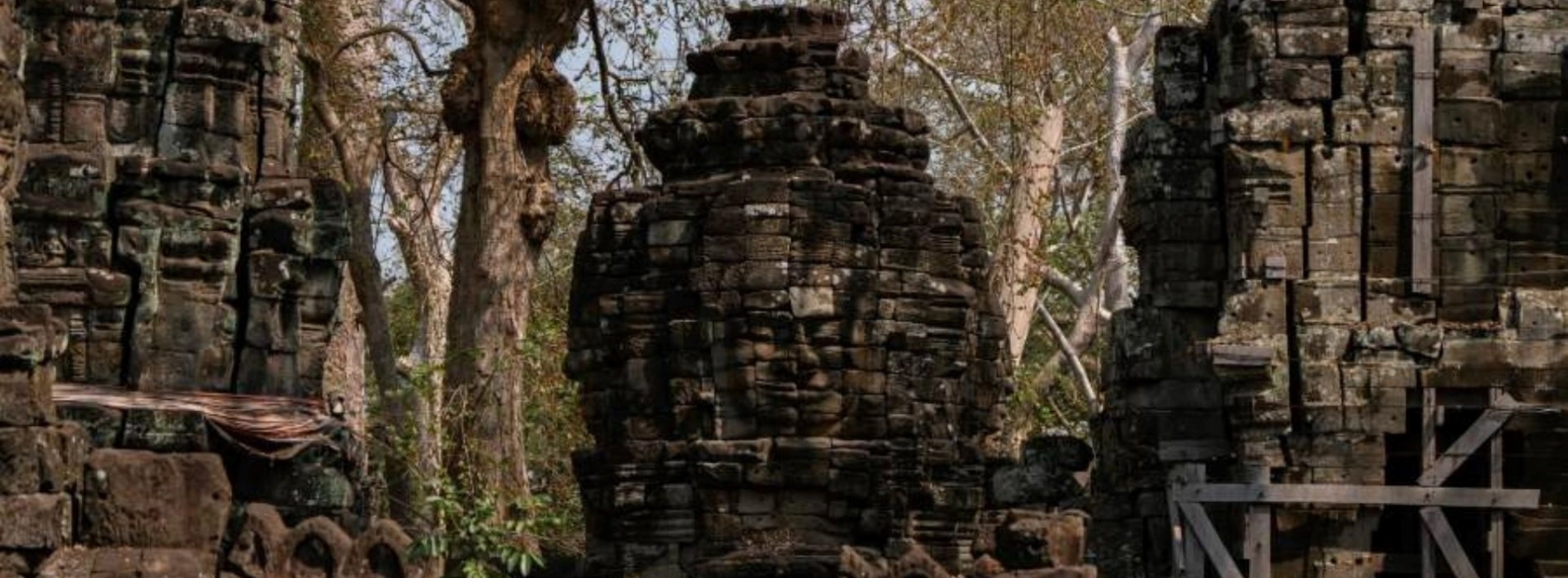
The Banteay Chhmar temple complex, located in the northwest of Cambodia's Banteay Meanchey province, is a large and historically significant site from the late 12th to early 13th century. Built during the reign of King Jayavarman VII, the complex This impressive complex features intricate bas-reliefs, majestic temples and satellite structures, demonstrating the grandeur of the Khmer Empire and the Bayon style of architecture. Despite its remote location, Banteay Chhmar is still an important part of Cambodia's cultural heritage.
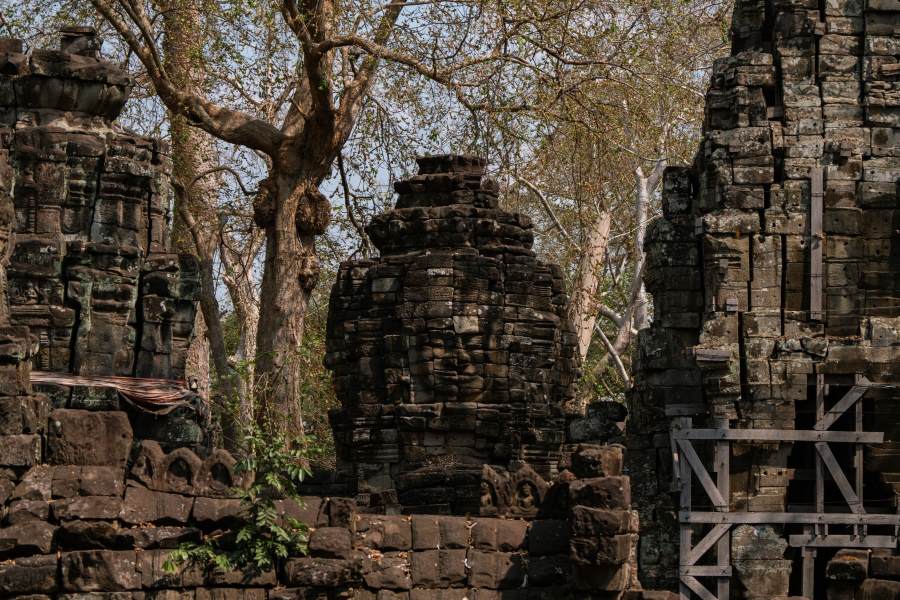
The Banteay Chhmar Temple Complex, a majestic Khmer Empire site (Cre: roma lim)
The Banteay Chhmar temple complex is located in Banteay Chhmar commune, Thma Puok district, Banteay Meanchey province, approximately 165 kilometers northwest of Siem Reap and the renowned Angkor Wat complex. The complex is surrounded by picturesque Cambodian countryside, offering a serene and less commercialized environment compared to other major archaeological sites. Its proximity to smaller villages provides visitors with a glimpse into the local way of life, enriching the cultural experience of exploring this historical gem.

The Banteay Chhmar temple complex is located in Banteay Chhmar commune (Cre: getyourguide)
Read more: Cambodia tours 7 days
The Banteay Chhmar temple complex was built from the late 12th to early 13th century and is a testament to the architectural and cultural pinnacle of the Khmer Empire under King Jayavarman VII. Dedicated to Buddhism, this complex was likely built to honor the king's son and four generals who died defending the empire. Jayavarman VII, known for his monumental construction projects, envisioned Banteay Chhmar as both a religious site and a commemorative site.
Despite its grandeur, Banteay Chhmar remains relatively unknown compared to Angkor Wat, partly due to its remote location. Over the centuries, the complex fell into a state of abandonment due to natural decay.
In recent years, efforts by the Cambodian government and international organizations have aimed to restore and preserve the site. These initiatives focus on preserving architectural integrity and promoting sustainable tourism, ensuring that Banteay Chhmar remains a vital link to Cambodia's illustrious past.
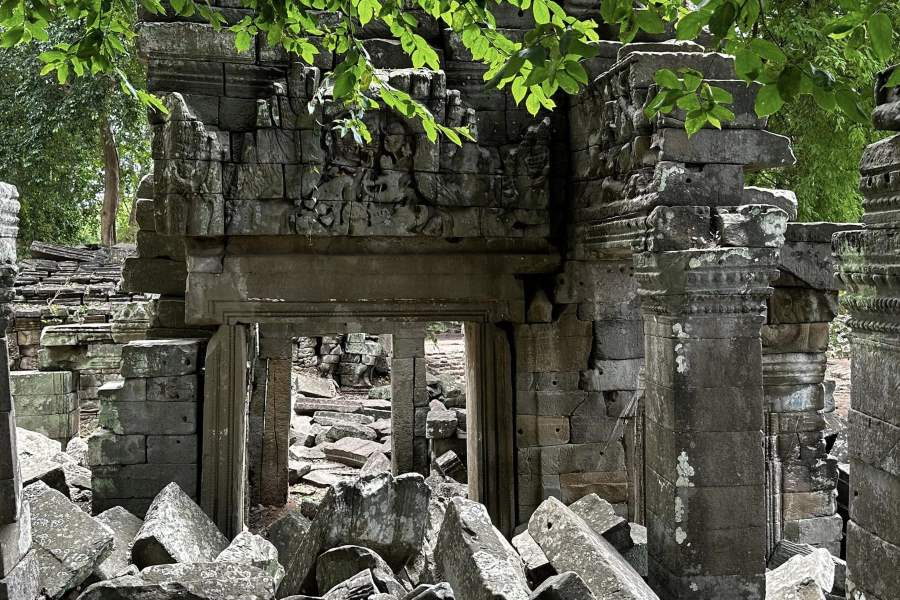
The Banteay Chhmar temple complex was built from the late 12th to early 13th century (Cre: Lloyd Llewellyn-Jones)
Architectural
The Banteay Chhmar temple complex was meticulously designed to reflect Hindu theology and astrology. The main towers are strategically located on the axis of the four cardinal directions, surrounded by rectangular walls and galleries, and surrounded by a moat, symbolizing Mount Meru, the mythical home of Shiva and the axis of the universe.
The central temple has four gates, each with images of gods and giants holding the naga snake, symbolizing the sacred Hindu universe. The urbanization of Banteay Chhmar spurred the development of surrounding communities, marking it as an important and enduring masterpiece of Angkorian art and architecture.
However, the structure leaves behind traces of a hasty construction process, possibly due to King Jayavarman VII's ambitious building projects across the empire. This adds to the intrigue surrounding the completion of the complex.

Architectural of Banteay Chmmar Temple Complex (Cre: roma lim)
Material
Materials: The builders primarily used sandstone and laterite, common construction materials during the Angkorian period.
Style
The architectural style reflects the reign of Jayavarman VII, with similarities to Angkor Thom, particularly the enigmatic face towers.
Decoration
The outer gallery's bas-reliefs, depicting war scenes and daily life, were likely created during construction. These intricate carvings offer valuable insights into the Khmer culture of the period.

The builders primarily used sandstone and laterite, common construction materials during the Angkorian period (Cre: roma lim)
The Banteay Chhmar temple complex offers a range of activities that allow visitors to immerse themselves in its historical, cultural, and natural significance. Here are some of the key activities:
Explore the temple
Visitors can spend hours exploring the vast complex with its intricate bas-reliefs, faceted towers and hidden nooks. Each structure and carving tells a story about the rich history and religious practices of the Khmer Empire. You can spend a fun day wandering through the various areas, the central temple, and the outer galleries.
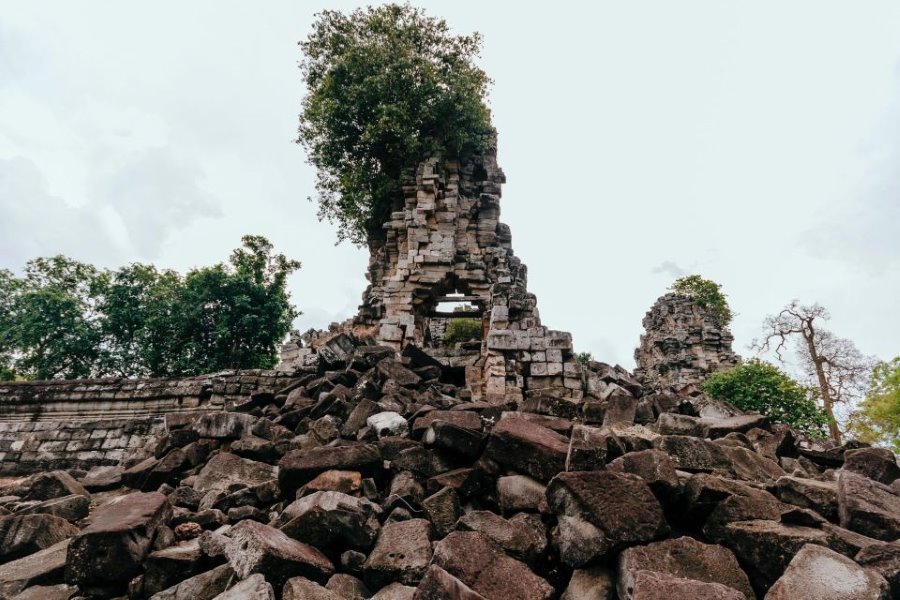
Visitors can spend hours exploring the vast complex (Cre: getyourguide)
Cycling and Walking Tours
The rural setting of Banteay Chhmar is ideal for cycling and walking tours. These activities allow visitors to explore the temple complex and its surroundings at a leisurely pace, enjoying the natural beauty and peaceful atmosphere.
Cultural Interactions
Nearby villages offer a glimpse into local life. Visitors can interact with residents, observe traditional crafts, and participate in local cultural activities, gaining a deeper understanding of the area's heritage.
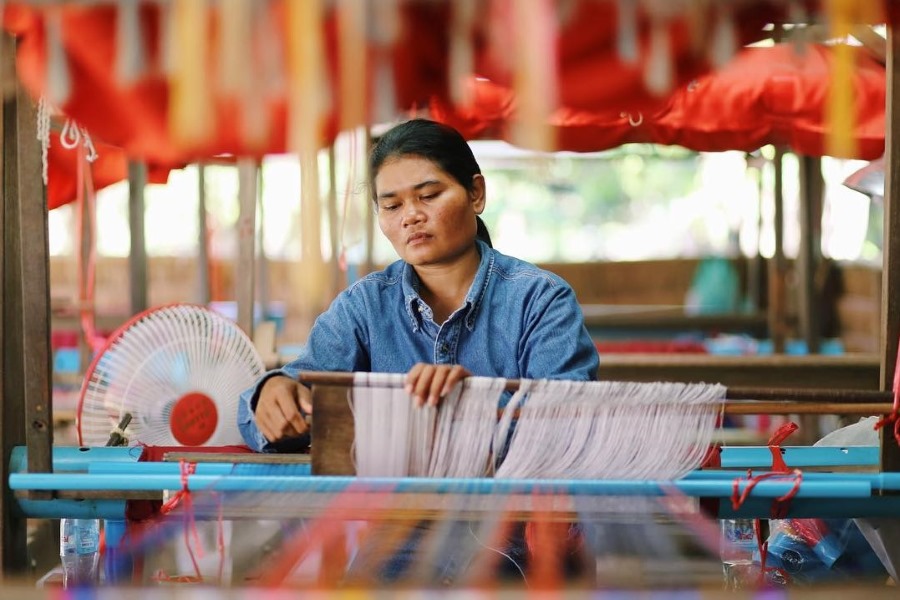
Explore cultural interactions (Cre: denizyilmazakman)
From major cities, you can move to Sisophon, the town closest to Banteay Chhmar.
From Sisophone you can choose several means of transportation to Banteay Chhmar Temple Complex:
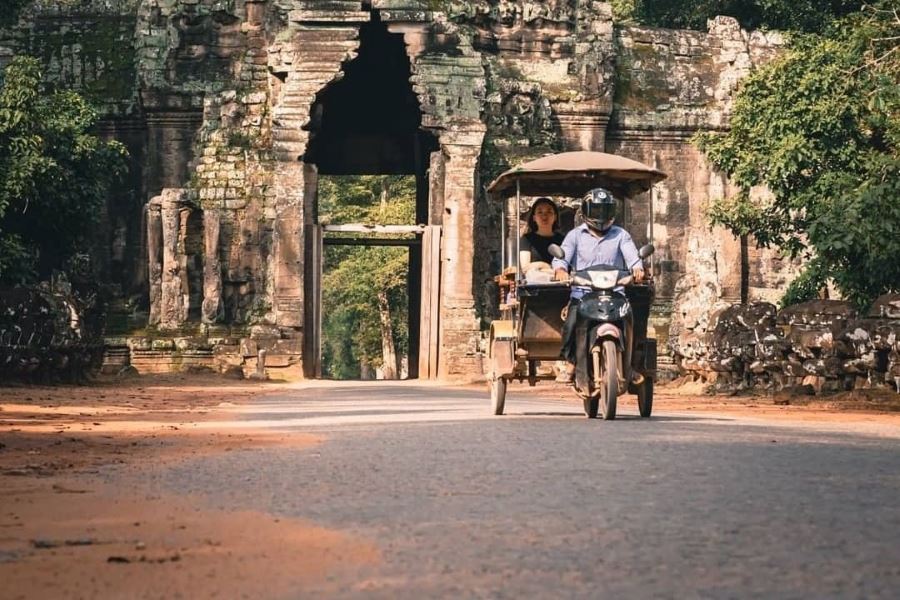
Tuk-tuk is the most popular vehicle in Cambodia (Cre: beautifulcambodia)
The best time to visit the Banteay Chhmar Temple Complex is during the dry season, which typically spans from November to April. During this time, the weather is generally more pleasant, with lower humidity and minimal rainfall, making it ideal for exploring the outdoor temple complex and its surroundings.
Some cultural festivals and events may take place during the dry season, providing a chance to experience local traditions and celebrations in nearby villages. While the dry season is generally considered the best time to visit, it's also the peak tourist season, so expect larger crowds at popular attractions.
It's important to note that Cambodia's climate can be unpredictable, and occasional brief showers may occur even during the dry season. Therefore, it's advisable to check weather forecasts and plan accordingly, regardless of the time of year you choose to visit.

The best time to visit the Banteay Chhmar Temple Complex is during the dry season (Cre: getyourguide)
When traveling to the Banteay Chhmar Temple Complex, it is essential to be fully prepared for a rewarding and enjoyable experience. Here are some tips to consider:
By following these tips and practicing mindfulness and respect, you can make the most of your visit to the Banteay Chhmar Temple Complex while making a positive contribution to the local community and environment.
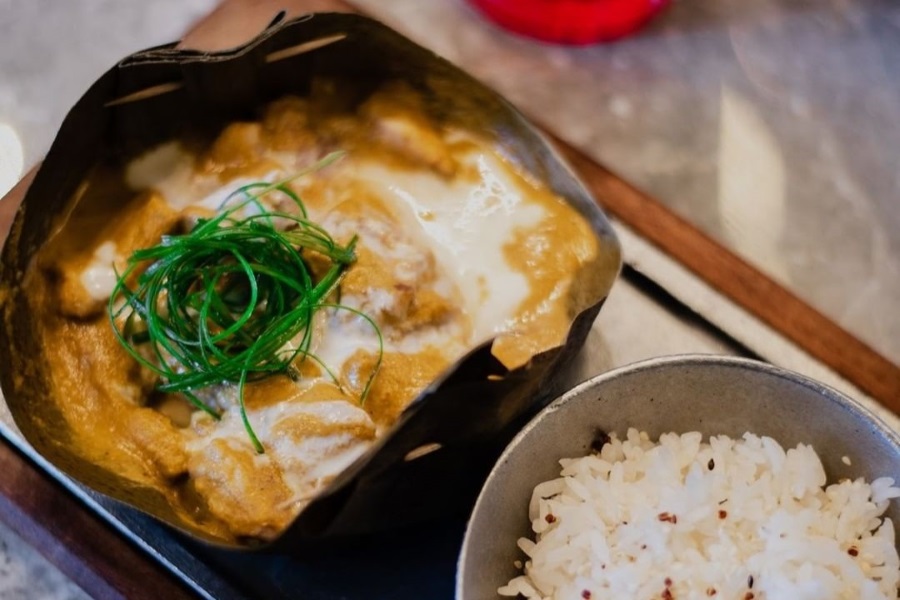
You can enjoy typical Cambodian dishes when visiting Banteay Chhmar (Cre: aguabites)
Banteay Chhmar is a hidden gem that showcases the rich history and cultural heritage of Cambodia. Its stunning temple complex, intricate carvings, and serene surroundings make it a must-visit destination for history enthusiasts and travelers seeking unique experiences.
Asia King Travel hopes to join you in exploring the historical beauty of the Banteay Chhmar temple complex.
Read more: Cambodia excursions
Embark on the Banteay Chhmar Tours 2 Days: Cultural Exploration to uncover the h...